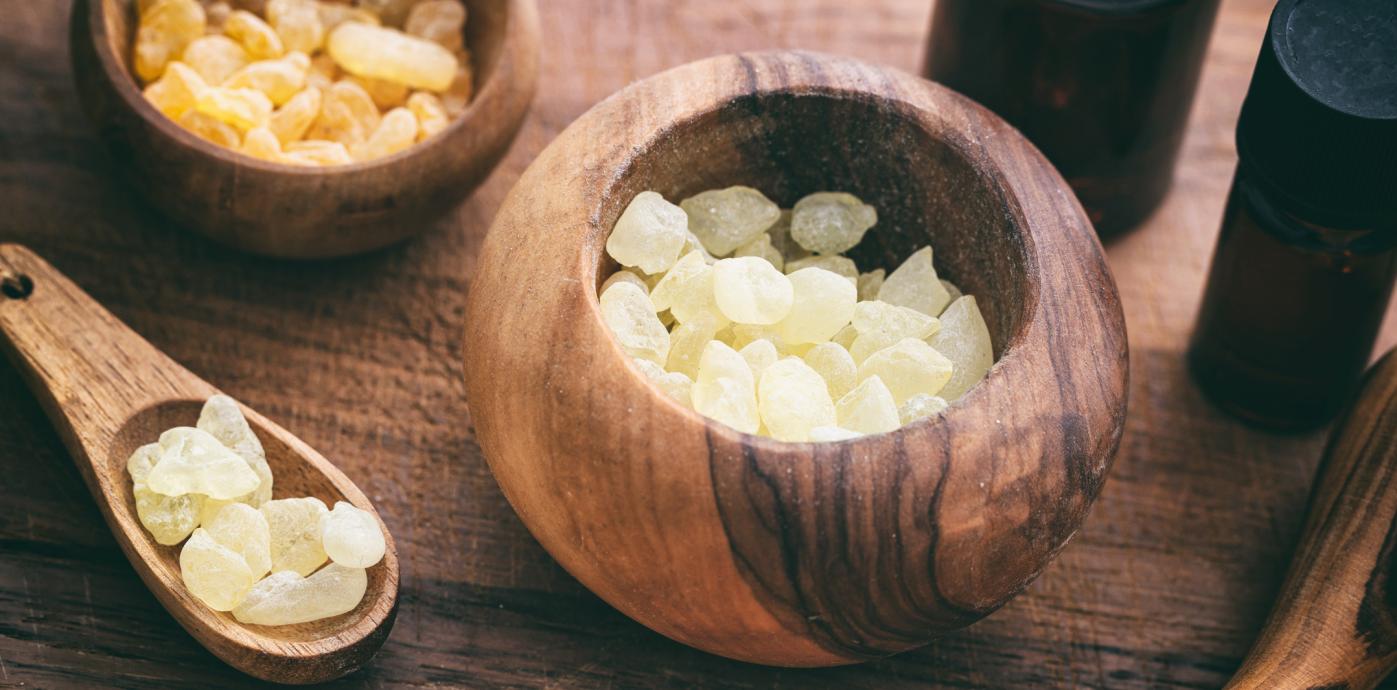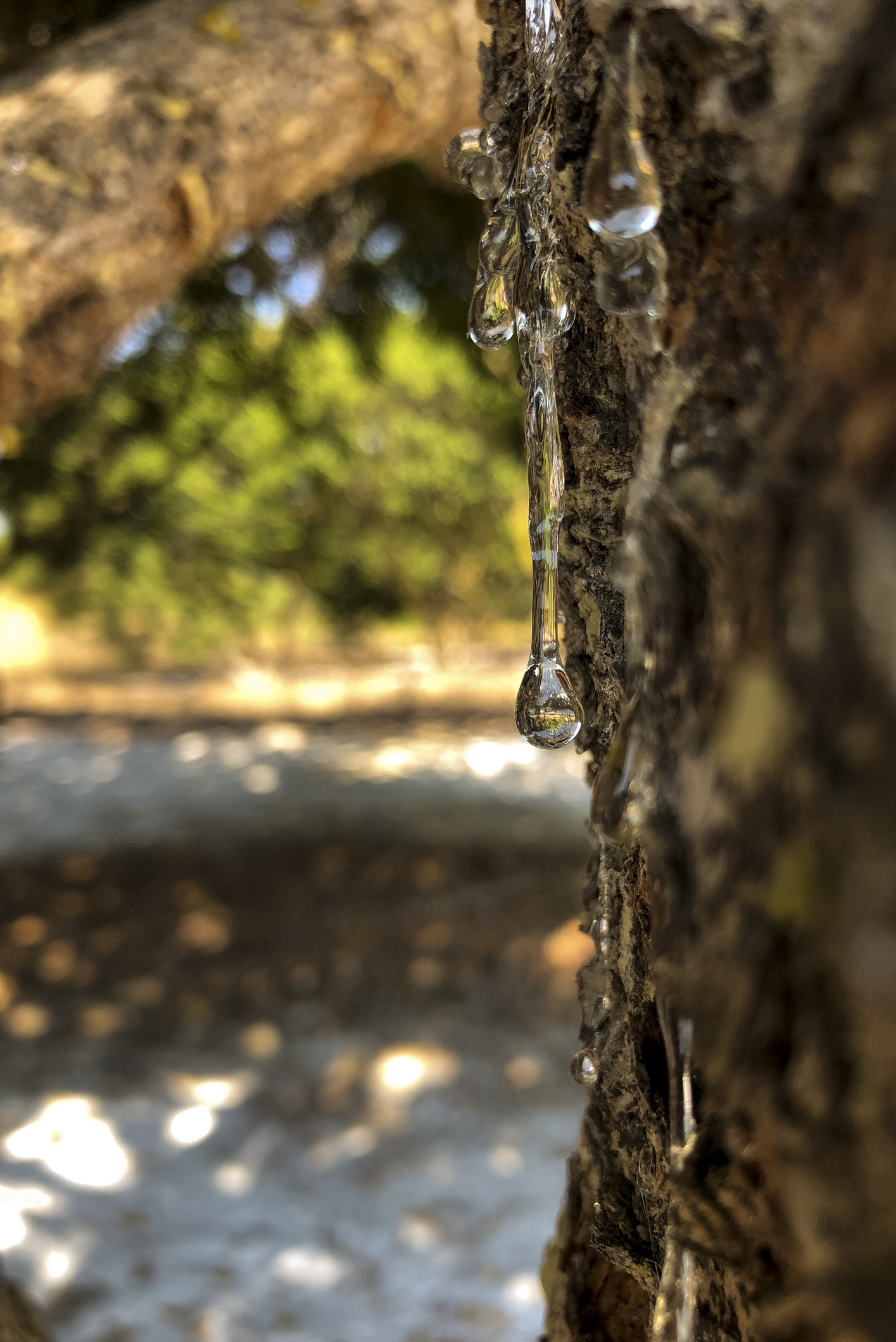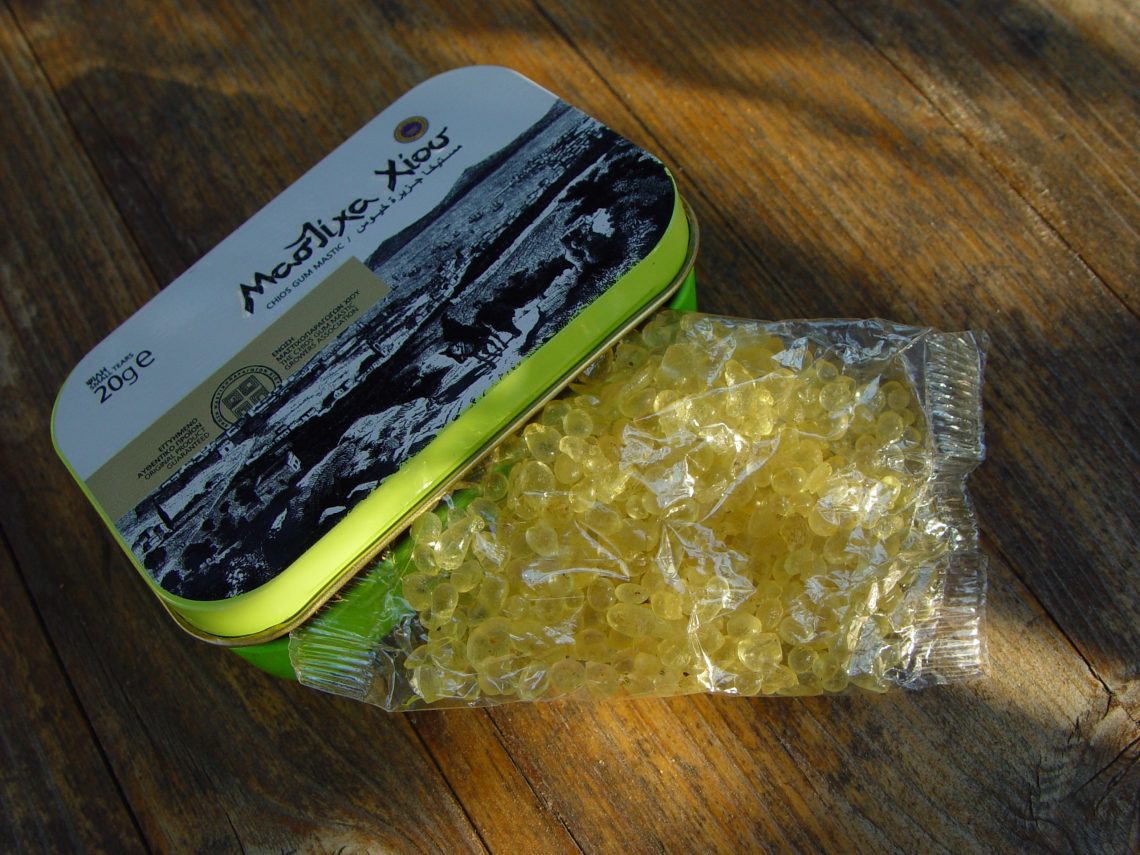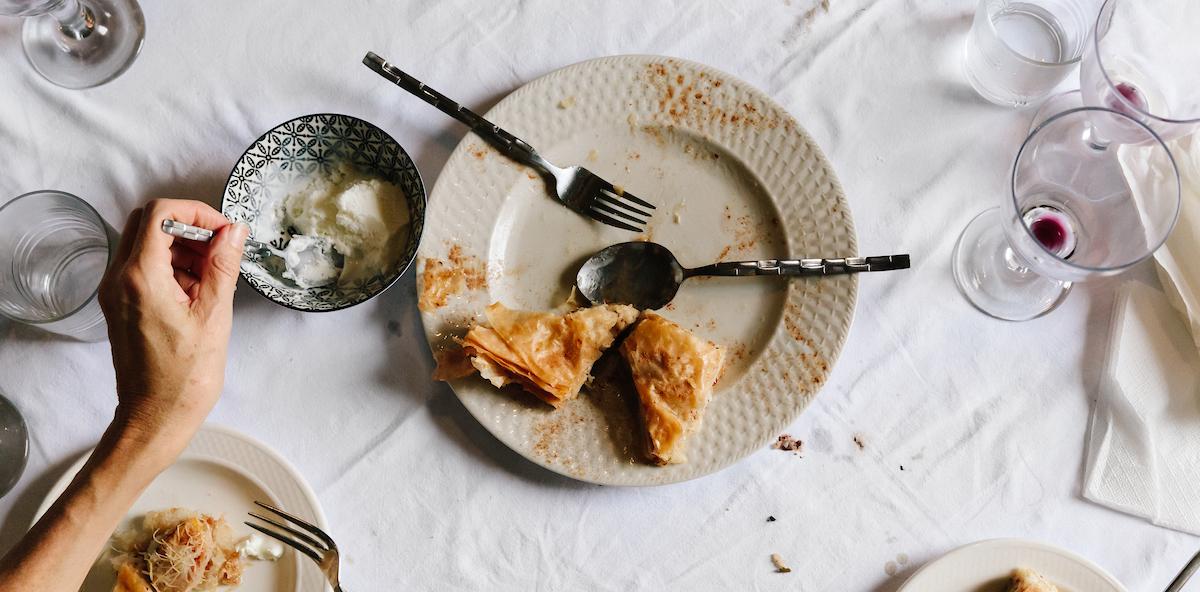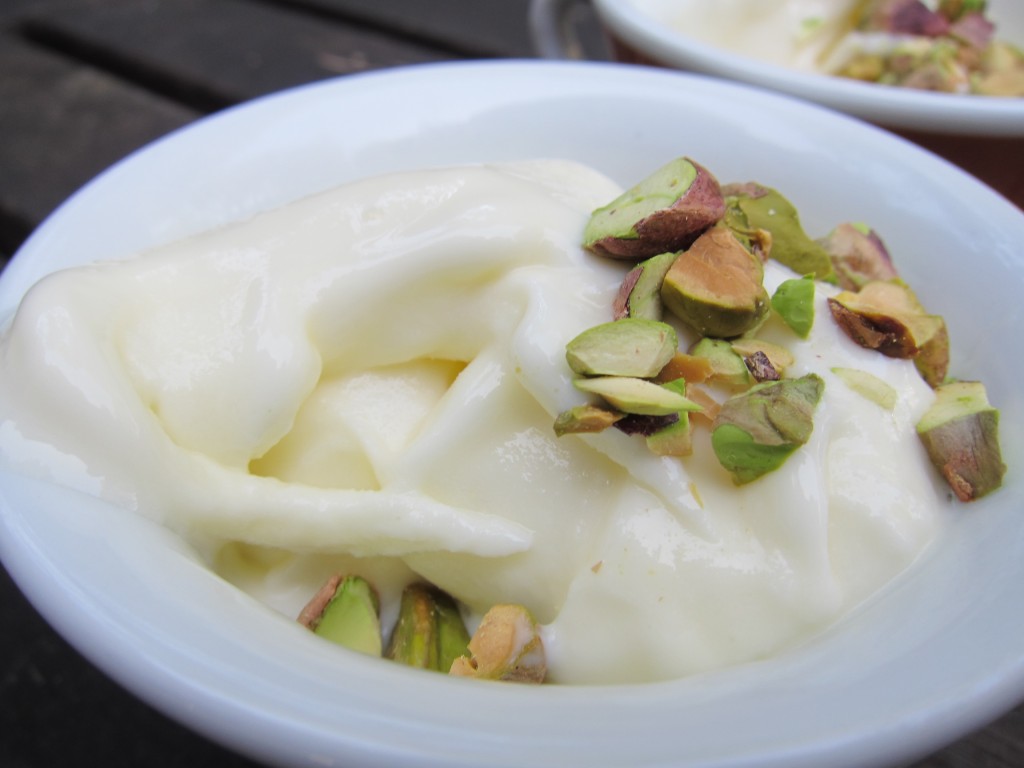What is mastic? For many, it is a mysterious ingredient! Few people outside of Greece and the Eastern Mediterranean are familiar with mastic and its herbal, licorice-like flavor.
Mastic is the dried resin that comes from a special variety of the mastic tree, and it grows only on the Greek island of Chios (and nowhere else in the world!). Mastic can be chewed like gum, or used to flavor ice cream, breads, pastry, candy, and liqueurs. Traditionally believed to have medicinal and healing properties, it is also used in cosmetic and personal care products.
The origins and story of mastic are steeped in Mediterranean history and legend—as you’ll read in the essay below from Oldways founder K. Dun Gifford. In the following essay, adapted from author, journalist, and teacher Aglaia Kremezi, read how this under-the-radar ingredient may be poised to become “the talk of the world.”
Mysterious, Magical Mastic by K. Dun Gifford
(with appreciation to John Perikos. Originally printed in the program book for the 1999 Symposium, The Magic of the North Aegean)
History
We discover references to mastic in such diverse places as logbooks of Christopher Columbus’s first voyage to the New World, and in the account and recipe books of the Sultans of Topkapi and the Seraglio. We read in the history books that the allure of mastic drew emperors, monarchs, and pirates into battles for control of the mastic lands and villages of Chios.
What is this mastic?
It is the dried resin droplets of the mastic tree, which grows only on the rolling hills of southern Chios. These droplets are always called tears, not only because they are shaped like tears, but also because of the sturdy legend that mastic trees began to “cry” when Saint Issidoros cried out in pain during his martyrdom.
For centuries powerful Mediterranean civilizations have tried to transplant the mastic tree to their homelands, to escape the monopoly prices charged by the Chian producers. Despite these determined efforts, however, Chios has always remained the only producer of mastic. While the tree grows other places in the Mediterranean, the special variety that grows in Chios is the only one that produces the resin, mastic.
The word “mastic” comes from the early Greek word mastichon (to chew). It is the root word of the English word masticate. Mastic is a natural chewing gum, and it was the only chewing gum the ancients had. They believed it good for brightening teeth and tightening gums, strengthening blood, drying up coughs and colds, aiding digestion, and healing wounds.
Mastic is the base of Chian liqueur called “Chios Masticha,” and helps define the character of a number of ouzos, rakis and other spirits. It is used as an agent in ice creams, as an aromatic in sweets and baking, as a flavoring agent in cooking, and as an aphrodisiac in South Morocco and Mauritania.
In refined form, mastic has roles in a variety of non-food uses—in frankincense, in textile finishing, in perfumes, in toothpaste, in restoring paintings, and many, many others.
Production
There are 21 mastic villages in the south of Chios, from which the owners of the groves of mastic trees manage their share of the island’s plus-or-minus 2,000,000 trees, and then harvest and clean the mastic tears. Each tree gives off an average of 320 grams of mastic a year and begins producing when about ten years old. It will produce for about 70 years, with output declining thereafter (although it can live for 200 years!). It is evergreen with leaves like myrtle or laurel and grows to about 6 to 10 feet tall. It has a sturdy trunk and an extensive root system, which often reaches 60 feet in length.
The trees produce “gum mastic,” a resinous substance which oozes and drips into “tear” shapes from small cuts sliced into the bark of the tree trunks with knives. The number of cuttings per tree each year starts at about 15, gradually working up to about 100 after about 10 cutting episodes. Some of the tears fall to the ground and are swept up, while others are taken directly from the trunk with a tool called timitiri.
The color of the tears when they first appear is very pale green, probably from traces of chlorophyll, but the tears soon turn crystal clear as the resin slowly evaporates and the tears “coagulate.” At first the tears are almost impossibly sticky on fingers, but after 15 days, they are readily handled. After a year of drying, the tears turn a pale amber, from oxidation.
These tears can be chewed as gum without any treatment. Having popped dried clear mastic tears into my mouth directly from pulling them off a mastic tree trunk, I can describe the taste as initially a little bitter. This bitterness quickly disappears, though, leaving a long-lasting chew with a pleasant and special aroma.
Mastic harvesters do an initial cleaning and grading by size and quality, thereafter keeping what they want for their own use and selling the rest to the Chios Mastic Cooperative. The Cooperative then further cleans and grades the mastic, similarly, dividing the result into the portion to be sold for distillation into mastic oil and the portion to be sold as mastic tears.
*Note: At the end of this essay in the program book for the 1999 Symposium in Chios and Lesbos, The Magic of the North Aegean, Dun Gifford challenged the chefs, cookbook authors, scientists, food writers and food retailers who were in Chios with Oldways to apply their collective culinary and sensory imaginations to devise new (or restore ancient) culinary uses for mastic. He noted that, if we can do this, we will have found a specific (and perhaps prototype) approach for new ways to helping to preserve the old ways.
Mastic Became the Talk of the World, adapted from Aglaia Kremezi
(adapted from an original post published on Aglaia’s Table)
To those unaccustomed to the flavor of mastic, it may be an acquired taste!
Author, journalist, and teacher Aglaia Kremezi recalls the 1999 Oldways symposium in Chios: “The participants tasted many traditional and creative dishes, both sweet and savory, but most were not particularly impressed with mastic’s elusive flavor and aroma, which proved to be an acquired taste for non-Greeks.” For centuries, mastic (the crystallized sap of the wild pistachio shrub) was exported throughout the Middle East and the Arab world, but not exported widely elsewhere in the world.
However, lately mastic is making waves, as it did with Frank Bruni’s recent article in the New York Times called “Can This Ancient Greek Medicine Cure Humanity?”
“Over my 54 years, I’ve pinned my hopes on my parents, my teachers, my romantic partners, God. I’m pinning them now on a shrub. It’s called mastic, it grows in particular abundance on the Greek island of Chios and its resin — the goo exuded when its bark is gashed — has been reputed for millenniums to have powerful curative properties,” he wrote.
Today in Greece, mastic is still chewed like gum to clean and sweeten the breath. The flavor, a licorice and pine-like aroma, also flavors many traditional breads and cookies from the region.
“As kids we used to love mastic ypovrichio (submarine): a teaspoon of mastic-scented soft sugar candy served plunged in iced water,” writes Aglaia. However, she notes that “mastic liquer and mastic ice cream are by far the most popular edibles in Greece.”
Mastic ice cream is quite different from American and European ice creams. ”I still remember the wonderful ice creams we used to make in summer, when I was a child, using a rented hand-cranked machine, to which we added ice and coarse salt. In those days, the cream was thickened not with eggs but with salep, a starch produced by pounding the dried tuber of a wild orchid,” writes Aglaia. ”I love it, but it seems that it is yet one more of the foods that only we, in the Eastern Mediterranean really appreciate.”
Though mastic remains an under-the-radar ingredient in many places today, chefs continue to incorporate mastic into their dishes, both sweet and savory. At a popular meze restaurant in downtown Athens called Tzitzikas and Mermigas, the chef serves an innovative savory dish called mastihato chicken, or chicken breast served on a shredded phyllo pastry nest and doused in a creamy, mastic-scented sauce.
What’s next for mastic? Look out for this ingredient as it may just become “the talk of the world!”

